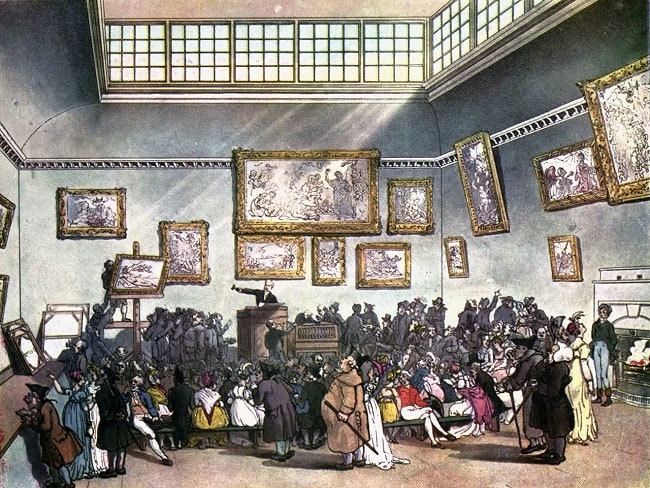
“Deceptive Dealers, Auction House Scandals, and Pub Rumors: Uncovering Industry Secrets”

# How London Became an Art Capital: A Review of *Rogues and Scholars* by James Stourton
The transformation of London into a global art capital is a story filled with intrigue, secrecy, and larger-than-life personalities. As British critic John Berger once remarked, the real history of art dealing in London can never truly be told due to the many “well-kept secrets” embedded in its legacy. James Stourton, an ex-chairman of Sotheby’s, attempts to uncover these secrets in his book *Rogues and Scholars: A History of the London Art World: 1945-2000* (2025).
## The Hidden World of Art Dealerships
Unlike traditional history books that rely on concrete evidence, Stourton’s account is largely based on oral interviews with gallery owners, auction house staff, and dealers. Documentation in this field is scarce—unlike government archives or corporate records, much of the art world functions through personal relationships, handshake deals, and so-called “gentlemen’s agreements.”
Stourton brings to life the eccentric figures who shaped London’s art market. Readers meet figures such as Ridley Cromwell Leadbeater, who managed Christie’s with an air of aristocratic charm, or collectors like Mr. Dent, who famously gifted Sotheby’s chairman Peter Wilson a toffee apple. These colorful anecdotes make for entertaining reading but also reveal the sometimes absurd and informal nature of the industry.
## The Gentleman’s Game—or Just a Game?
Much of Stourton’s book is devoted to stories of how art dealers outmaneuvered each other. One infamous tale involves Monty Bernart, known as a “lovable rogue,” who once bribed a train conductor to skip a stop so he could reach an estate sale before his competitors.
While amusing, these stories also illustrate a deeper point—this was a world in which reputation, quick thinking, and often dubious ethics played just as much of a role as expertise. However, Stourton does not always press his sources for deeper truth. For example, he touches on art critic Brian Sewell’s claim that auction house employees were underpaid and depended on bribes, but he quickly dismisses it without much investigation.
## The Rise and Fall of the London Art Trade
For much of the 20th century, the London art trade was dominated by two behemoths: Sotheby’s and Christie’s. Other auction houses and galleries existed, but few rivaled these institutions in terms of prestige, clientele, and revenues. Stourton focuses on this dominance but only briefly acknowledges the emergence of Bonhams and Phillips as challengers in the later years.
One of the most fascinating aspects of the book is its discussion of the collusion scandal of 1997, when Sotheby’s and Christie’s were caught fixing auction fees. While such revelations could have permanently damaged these firms, Stourton notes that the art market rebounded quickly, showing the industry’s remarkable resilience.
Ultimately, the biggest threat to traditional auction houses has not been corruption scandals but modernization and increased transparency. The digital age has pushed auction houses to disclose previously hidden practices, such as inflating prices or using in-house bidders to raise values.
## A Fascinating But Imperfect Chronicle
*Rogues and Scholars* is an engaging read, particularly for those interested in the inner workings of the art world. However, the book’s reliance on anecdotes over hard facts can make some stories feel exaggerated or unverifiable. Moreover, Stourton’s own biases—perhaps shaped by his tenure at Sotheby’s—surface throughout, especially in his favorable portrayal of the auction houses’ leaders.
Despite these shortcomings, the book offers valuable insights into a world that remains mysterious to outsiders. While it presents a somewhat romantic view of London’s art market, it does not shy away from showcasing the ruthless competition and eccentric personalities that define it.
For those fascinated by art history, business intrigue, or the culture of London’s elite, *Rogues and Scholars* provides both entertainment and an education in how the art world really operates—often in the shadows.